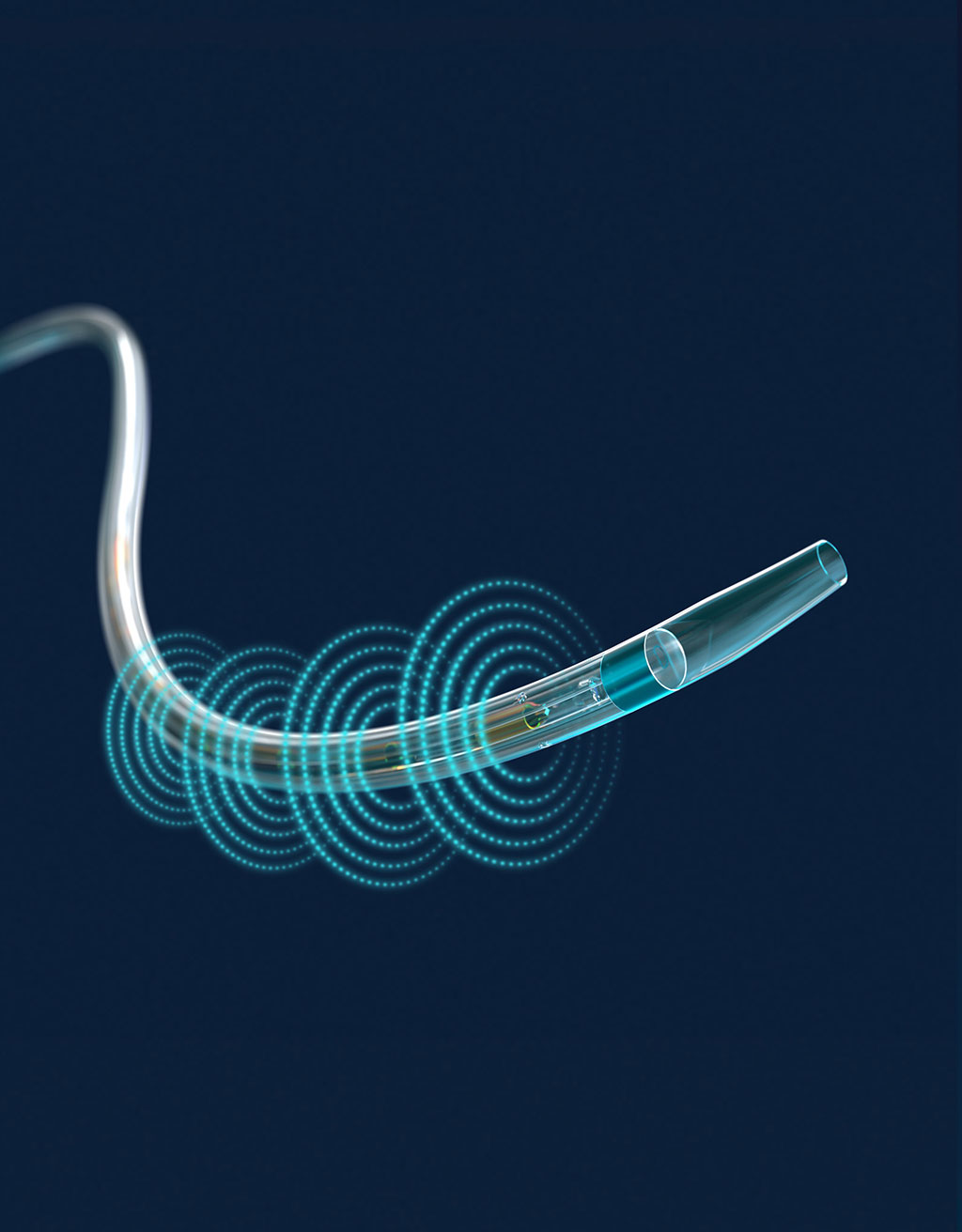Endovascular Ultrasonic System Treats Pulmonary Embolisms
By HospiMedica International staff writers
Posted on 18 Oct 2021
An ultrasound-facilitated catheter-directed low-dose fibrinolysis device accelerates the penetration of thrombolytic agents into pulmonary embolisms (PEs). Posted on 18 Oct 2021
The Boston Scientific (Natick, MA, USA) EkoSonic (EKOS) Endovascular System is intended for the treatment of PE patients with a 50% or more clot burden in one or both of the main pulmonary or lobar arteries. The device consists of an intelligent drug delivery catheter (IDDC), an infusion catheter with a removable coaxial ultrasound transducer core, and a microsonic device (MSD). The acoustic energy conditions blood clots by thinning fibrin, increasing porosity, and creating a pressure gradient that transports the thrombolytic drug into the occluding thrombus.

Image: The EkoSonic IDDC and removable coaxial ultrasound transducer core (Photo courtesy of EKOS Corporation)
In an international registry study published in 2020 in Circulation Cardiovascular Interventions that included 489 patients treated with the EKOS system, there were no intracerebral hemorrhagic (ICH) events and a major bleeding rate of 2.5%, significantly lower than with a systemic thrombolysis drug. The results also demonstrated a 23% post-procedure reduction in the main indicator of heart strain from PE, measured as right ventricular to left ventricular diameter ratio (RV/LV).
“As the largest prospective body of evidence in the interventional PE space to date, the registry provides an accurate modern representation of patients with PE treated with the EKOS system every day,” said Michael Jaff, DO, chief medical officer of peripheral interventions at Boston Scientific. “The strong safety and efficacy findings exhibited in this registry add to the existing clinical evidence supporting the EKOS system as a treatment option that physicians can trust.”
“PE remains a life-threatening and complex disease, but these results provide an opportunity to advance patient care by showcasing evidence that proves a lower drug dose and shorter infusion duration of a thrombolytic agent may result in enhanced safety and efficacy,” said Keith Sterling, MD, of Inova Alexandria Hospital (Alexandria, VA, USA). “The findings in this registry analysis are very reassuring to physicians making critical evidence-based decisions for their patients in what are oftentimes emergent treatment situations.”
PE is a blockage of an artery in the lungs, most commonly due to deep vein thrombosis (DVT) arising from peripheral veins. Symptoms include shortness of breath, chest pain, and coughing up blood. PE warning signs include low blood oxygen levels, rapid breathing, a rapid heart rate, and sometimes a mild fever. In many cases the affected extremity will be painful, swollen, red, and warm, and the superficial veins may be engorged.
Related Links:
Boston Scientific














